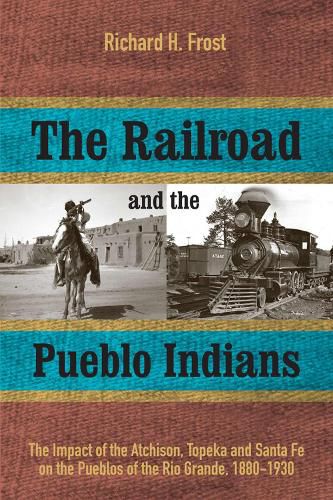Readings Newsletter
Become a Readings Member to make your shopping experience even easier.
Sign in or sign up for free!
You’re not far away from qualifying for FREE standard shipping within Australia
You’ve qualified for FREE standard shipping within Australia
The cart is loading…






Richard Frost examines the profound effects that the coming of trains had on Pueblo Indians in New Mexico’s Rio Grande Valley, where their arrival was a social and cultural tsunami. It affected community autonomy, privacy, and well-being and destroyed or damaged crops, livestock, and irrigation ditches. The trains brought lawyers, speculators, politicians, missionaries, anthropologists, timber thieves, health seekers, and government servants. While the trains also brought farm tools, clothing for children, and customers for Pueblo pottery, these were comparatively marginal benefits.
The pueblos responded variously, though mostly conservatively, to sustain their communities, and this book spotlights two very different responses. Santo Domingo Pueblo was defensive, while Laguna Pueblo chose accommodation. Overlooked aspects of these pueblos’ histories provide compelling reasons behind their varying responses and the fateful consequences.
$9.00 standard shipping within Australia
FREE standard shipping within Australia for orders over $100.00
Express & International shipping calculated at checkout
Richard Frost examines the profound effects that the coming of trains had on Pueblo Indians in New Mexico’s Rio Grande Valley, where their arrival was a social and cultural tsunami. It affected community autonomy, privacy, and well-being and destroyed or damaged crops, livestock, and irrigation ditches. The trains brought lawyers, speculators, politicians, missionaries, anthropologists, timber thieves, health seekers, and government servants. While the trains also brought farm tools, clothing for children, and customers for Pueblo pottery, these were comparatively marginal benefits.
The pueblos responded variously, though mostly conservatively, to sustain their communities, and this book spotlights two very different responses. Santo Domingo Pueblo was defensive, while Laguna Pueblo chose accommodation. Overlooked aspects of these pueblos’ histories provide compelling reasons behind their varying responses and the fateful consequences.